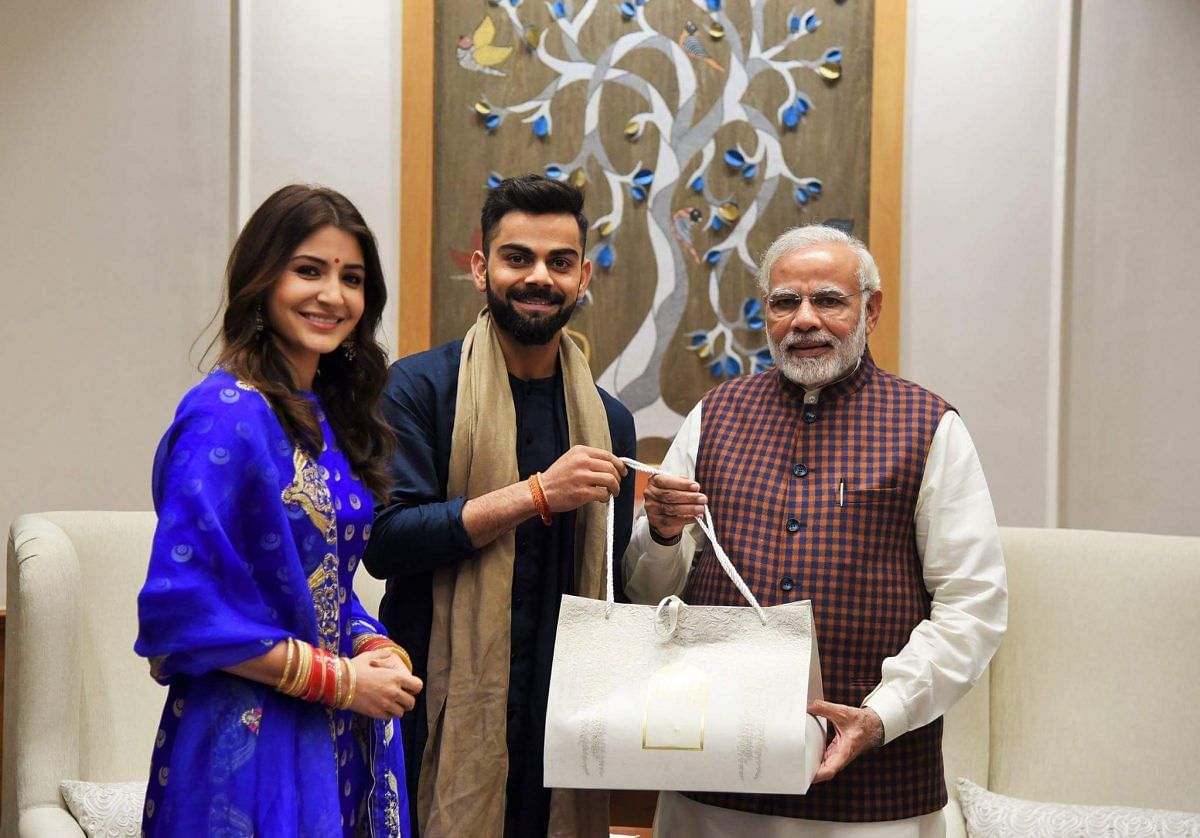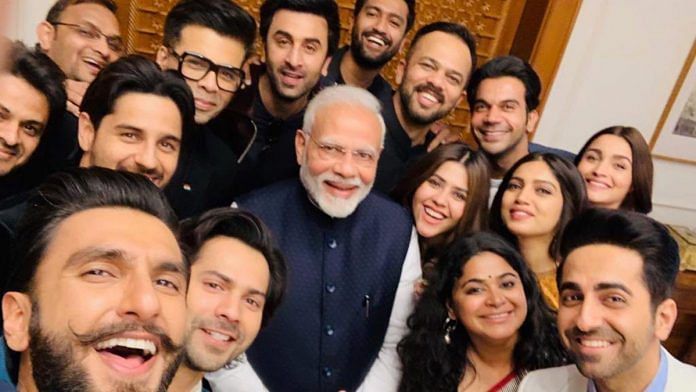At a time when Brand Modi has taken a serious hit, selfies with Bollywood stars help him look cool.
Almost every Indian is interested in at least one of these three things: cinema, sports and politics.
Very few are interested in all three. A cursory look at Google Trends India will tell you that on most days, between political news and sports updates, the online Indian is more interested in the latter.
Very few people closely follow what their chief minister or prime minister is up to. A surprisingly large number of people don’t know who their Member of Legislative Assembly or Member of Parliament is. Try asking around.
Political junkies think everybody else is a political junkie, just as Bollywood fans presume everyone has watched the latest blockbuster, and cricket fans assume everybody has followed that latest cricket series.
Also read: Narendra Modi looks at Bollywood’s ‘soft power’ for sequel to his government
Cinema, sports and politics may be very large bubbles but they are bubbles nevertheless. When Narendra Modi gets selfies taken with Bollywood stars, he is making use of a bubble outside the one that TV news watchers fall in. He is entering another world, exposing himself to a vast audience that doesn’t necessarily know the Bharatiya Janata Party’s vote-share in Chhattisgarh.
Sample this: Actor Ranveer Singh has 19.3 million followers on Instagram. His post that showed him hugging Prime Minister Narendra Modi has 31.5 lakh likes!
View this post on Instagram
Jaadoo ki Jhappi! ? Joy to meet the Honourable Prime Minister of our great nation ?? @narendramodi
At least some of this Bollywood junkie audience is not staunchly ideological and overtly politicised. There are many out there whose engagement with politics is low and peripheral, but their engagement with Bollywood is a daily addiction.
For such people, their Bollywood idols hugging Modi is as good as an endorsement. Those Instagram posts are worth millions in advertising.
Also read: Modi-loving Bollywood can learn from Kim Kardashian, who raised prison reforms with Trump
It seems obvious to people that politicians can benefit from celebrity endorsements. But Modi doesn’t need to produce selfies with Bollywood stars for that. He only needs them to say good things about him.
The photo-ops and wedding appearances all serve a purpose larger than endorsement: capturing the mind space of people who may be Bollywood fans but not political junkies.
Cinema is deeply political, and Bollywood is no exception. But cinema as an ‘entertainment industry’ can also be de-politicising. Everything is just visual: watch this selfie! Look at this backfie! When Russian President Vladimir Putin put out photos of himself shirtless astride a horse, a commentator remarked: “It is now possible for a politician to be a respected, feared, or hated ruler and a lighthearted celebrity story without contradiction. This foliation is markedly different from the usual attempts to “humanize” a leader. It is tantamount to creating two separate avatars—man-as-his-office and man-as-tabloid-fodder.”
This is true of Trump as well, who himself became a public figure through television. But it was also true of the Obamas. The glamour industry made it possible for ‘hundreds of thousands of people who detest Obama’s policies’ to ‘happily flip through a pictorial of Michelle’s dresses or coo at Bo [her dog].’
Kitne cool hai hum
The Modi era has politicised Bollywood in a sad, pathetic way, bringing the Mumbai cinema industry on its knees, reducing it to playing the court jester. Quite a few films have been made for no reason other than Modi government propaganda, from Toilet: Ek Prem Katha to Uri: The Surgical Strike.
All politicians understand the power of cinema, but their application of this understanding is limited to asking Bollywood stars if they’d like to become Members of Parliament. Modi understands the myriad ways in which the entertainment industry could help amplify his voice, and mould and sustain his image.
At a time when Brand Modi has taken a serious hit, selfies with Bollywood stars help him appear cool. He tweets about them as if the stars were his buddies.
It helps his desperate need to impress young voters who are asking difficult questions about jobs and the economy.

If people are angry about real issues like the money in their pockets, they will punish Modi at the polling booth. Yet, if Modi does better than his critics expect him to, it is not because his party rigged the EVMs.
It is because he has an apparent understanding of his audience and the various demographics they are divided into. And he finds ways to reach out to all the demographics separately.
Also read: How Ranveer Singh conquered the nepotistic world of Bollywood
Before his 2014 Lok Sabha poll campaign, Modi needed legitimacy of a certain kind. He needed to downplay his Hindutva hardliner image and highlight himself as the strongman who could deliver development. So we had Salman Khan flying kites with Modi in Ahmedabad. Khan didn’t clearly endorse Modi—he didn’t need to. Images speak louder than words, another truth about political communication Modi understands better than any Indian politician.
When Modi takes a selfie with Priyanka Chopra or is photographed laughing with comedian Kapil Sharma, he is capturing the mindless world of the entertainment industry where everything is gossip, cool, like-able and share-able.
When he attends the Virat Kohli-Anushka Sharma wedding reception, he hits the jackpot. Bollywood, cricket and politics in one photo.
The attention economy must have exploded that day.







Come on , you idiot.
Its the other way. Taking selfie with PM is cool.
PM Modi didnt go to bollywood star’s home to take selfie, its the other way.
“Quite a few films have been made for no reason other than Modi government propaganda, from Toilet: Ek Prem Katha to Uri: The Surgical Strike” Profit is the primary motive for any commercial cinema and both the movies mentioned were commercial successes. This itself calls your bluff.